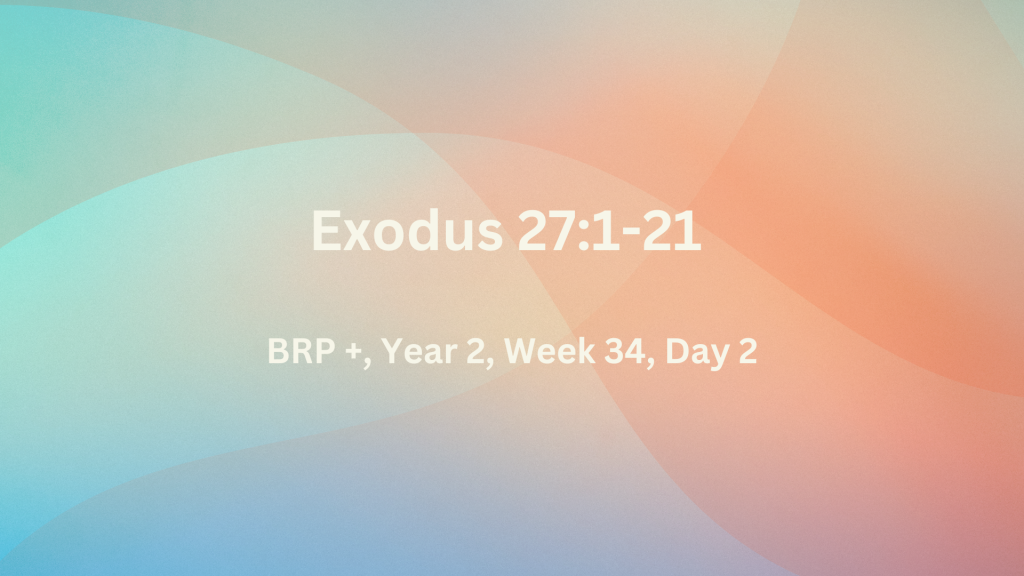Exodus 27:1-21
Q.1. What materials were used to make the altar? What were the utensils for, and of what were they made? How could Moses relate so many exact details? – (Exo.27:1-8)
Moses was commanded to make the altar square, and – hollow with acacia wood planks, as it was shown you in the mountain … five cubits long and five cubits wide, and its height shall be three cubits (Exo.27:8 & 1). Note: a cubit was about eighteen inches. It had horns on each corner and was to be overlaid with bronze (Exo.27:2). The utensils … pails, shovels, forks, basins, and firepans were to be made of bronze as well (Exo.27:3). Attached were bronze rings through which two poles, overlaid with bronze, were fitted for transportation. A grating of bronze was suspended inside the altar (Exo.27:4-7).
Q.2. How was the court of the tabernacle constructed? What was its size and shape? Who was responsible for providing the oil and serving in the tabernacle? – (Exo.27:9-21)
The outer court of the Tabernacle in the wilderness was symbolic of the world, and everything outside of the Presence of God. It was made of bronze. It was adorned with fine twisted linen curtains. Moses was told the exact size of the area, which was one hundred cubits, with the drapes hung on twenty pillars of bronze by fifty cubits wide with ten pillars. The gate had a screen of twenty cubits with blue, purple, and scarlet twisted material, with fifteen cubits of twisted linen on either side. The height of the screen was five cubits i.e. seven and a half feet (Exo.27:9-19). All the pegs were made of Bronze. The beauty of the tabernacle would stand out from the tents of the Israelites. The light in the Holy Place came from clear oil of beaten olives, provided by the people, and attended to by the priests – to make the lamp burn continually (Exo.27:20). This tent of meeting had to be kept clean and tidy. It was – … outside the veil which is before the ark of testimony, Aaron and his sons shall keep it in order from evening to morning before the Lord; it shall be a perpetual statute throughout their generations for the sons of Israel (Exo.27:21). Only the priests were allowed into the Holy place, and only the High Priest could enter the Holy of Holies and that only once a year, on the Day of Atonement – 6 Now when these things have been so prepared, the priests are continually entering the outer tabernacle performing the divine worship, 7 but into the second, only the high priest enters once a year, not without taking blood, which he offers for himself and for the sins of the people committed in ignorance. 8 The Holy Spirit is signifying this, that the way into the holy place has not yet been disclosed while the outer tabernacle is still standing, 9 which is a symbol for the present time. Accordingly, both gifts and sacrifices are offered which cannot make the worshiper perfect in conscience, 10 since they relate only to food and drink and various washings, regulations for the body imposed until a time of reformation. 11 But when Christ appeared as a high priest of the good things to come, He entered through the greater and more perfect tabernacle, not made with hands, that is to say, not of this creation; 12 and not through the blood of goats and calves, but through His own blood, He entered the holy place once for all, having obtained eternal redemption (Heb.9:6-12). The ministry of the priesthood was only relevant – until a time of reformation (Heb.9:10). That time occurred when Jesus made the perfect sacrifice, once for all sinners, and once for all time (c.f. Heb.10.10, 12, 14).

